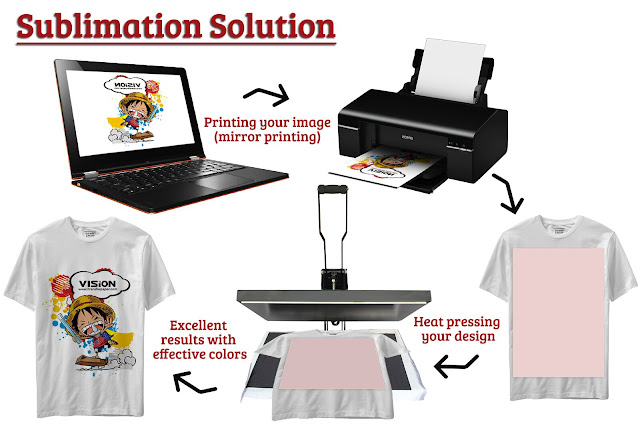Comparison 3D sublimation and sublimation film
The beginnings of sublimation were printing articles on planes and using a transfer flat iron . Over time, it emerged 3D sublimation to sublimate items irregular or 3D items such housings ,Mobile , ashtrays , dishes , cutlery , etc. The basic principle is the same: we print our design in a sublimation printer and then place the printed design around the sublimable article and apply heat and pressure in an oven 3D for transfer. 3D furnaces generally operate with a membrane that allows performing the vacuum and thus makes the design printed wrap the article surface. If instead of paper, use film sublimation got complete coverage of the article. In this post we share with you the results of our tests.
3D sublimation allows us to incorporate our sublimable business not flat items that otherwise could not sublimate. Many sublimable plastic items specific 3D oven ,phone housings, plates, bowls, cutlery , etc. During sublimation, these plastic products are subjected to elevated temperatures up to 200° c getting the image transfer but may also cause deformation . That is why we use a metal mold or timber in which anchor the sublimable article and the mold ensure that the product is not deformed .
Do we use sublimation paper or film?
In the 3D sublimation printing when we have 2 options. We can use sublimation paper or film sublimation . The film sublimation printing just as paper but with the difference that on heating and applying the vacuum, the film is adapted to the shape of the object and covering the entire surface, achieving a full coverage of the object in the stamping.
If instead we decide to use sublimation paper we must accept that the paper may crumple when performing the vacuum and create lines or defects in the design.
In order to compare the two methods: sublimation paper and film, we performed tests sublimation of a child plastic plate 3D oven with paper and film. In this post we will share with you the results and we will draw conclusions.
3D Sublimation paper
Sublimation paper placed on the base plate and enter the plate with the pan in the oven 3D. We perform the vacuum with the membrane and sublimates at 200 °C for 8 minutes . After this time, extract the plate and when removing paper note that there has been sufficient pressure by the vacuum membrane and stamping has only been partial, colors are not sufficiently intense.
conclusions :
We have an area smaller stamping and did not get full coverage of the plate.
The paper does not allow the membrane perform vacuum sublimation properly and could not be done correctly.
Sublimation 3D film
Place the plate in the mold and mold COATING plate and the printed film. Introduce plate and mold in the oven 3D, perform the vacuum with the membrane and sublimates at 200 ° C for 8 minutes . When the time has elapsed, we extract the product and the mold, remove the film and see that the result has been perfect . However, if we look in detail spot colors we can see a grainy effect that is inevitable in the use of film.
advantages of Sublimation film:
Imprinting complete object because during the vacuum, the film conforms to the shape of the article and can stamp edges and corners.
It is used the same way that paper: same print settings and the same parameters sublimation (temperature and time).
Disadvantages sublimation film :
The film retains some of the ink during ironing and designs with high mass color may generate a grainy effect .
It is slightly more expensive than sublimation paper .
3D Sublimation with film and paper
Learn from the website.if you have any question .wecome to contact us:
website:






评论
发表评论
see more on our web www.itransferpaper.com